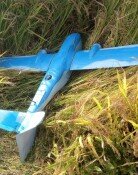Active Deterrent Strategy
The Presidential Commission for National Security Review, which was launched after the March 26 sinking of the naval ship Cheonan exposed a breach in national security, proposed to President Lee Myung-bak Friday tasks for defense reform. The key task is an active deterrent strategy aimed at preparing for various types of provocations by North Korea and discouraging it from launching them. Part of the strategy is to launch a preemptive strike on the Norths war command facilities and bases if signs indicate that Pyongyang will wage nuclear or missile attacks or provoke a war. The strategy falls into the category of self-defense rather than attack as a concept one step higher than the existing one for maintaining the status quo and focusing on defense.
North Korea claims to be a nuclear power and was hostile enough to attack the Cheonan. So there is always the possibility that it will provoke South Korea. The active deterrent strategy is an unavoidable choice for Seoul, which has to deal an enemy obsessed with developing nuclear weapons and ballistic missiles under the slogan of building a strong and prosperous country by 2012.
Key to the success of the active deterrent strategy is securing the most effective means for implementation. Above all, Seoul must secure intelligence assets such as spy satellites and high-altitude unmanned aircraft. The South Korean Air Force should also expand its aerial reconnaissance capabilities.
Needless to say, the South should be equipped with the means to neutralize the Norths military installations through surgical strikes if Pyongyang is found to be preparing to launch provocations. Without new ballistic missiles capable of reaching deep into the North and conducting surgical strikes, the active deterrent strategy will prove to be nothing more than an armchair strategy. As a signatory to the Missile Technology Control Regime, Seoul cannot develop missiles with a range exceeding 300 kilometers and thus cannot effectively cope with Pyongyangs missile threat. The South should resolve this by seeking understanding and cooperation from the U.S. Seoul also needs stealth fighter jets that can fly deep into North Korean territory for strikes. Smooth operation of the South Korea-U.S. alliance is a fundamental condition.
The commission also suggested that the administration set the mandatory military service period at 24 months instead of cutting it to 18 months by 2014. Though President Lee Myung-bak rejected the proposal and ordered the commission to review the matter cautiously, the current level of 22 months should be kept to maintain the proper level of troops and expertise. While modern warfare depends much on high-tech weaponry, well-trained soldiers are also a key factor in victory.



![‘건강 지킴이’ 당근, 효능 높이는 섭취법[정세연의 음식처방]](https://dimg.donga.com/c/138/175/90/1/wps/NEWS/IMAGE/2026/01/18/133181291.1.jpg)



